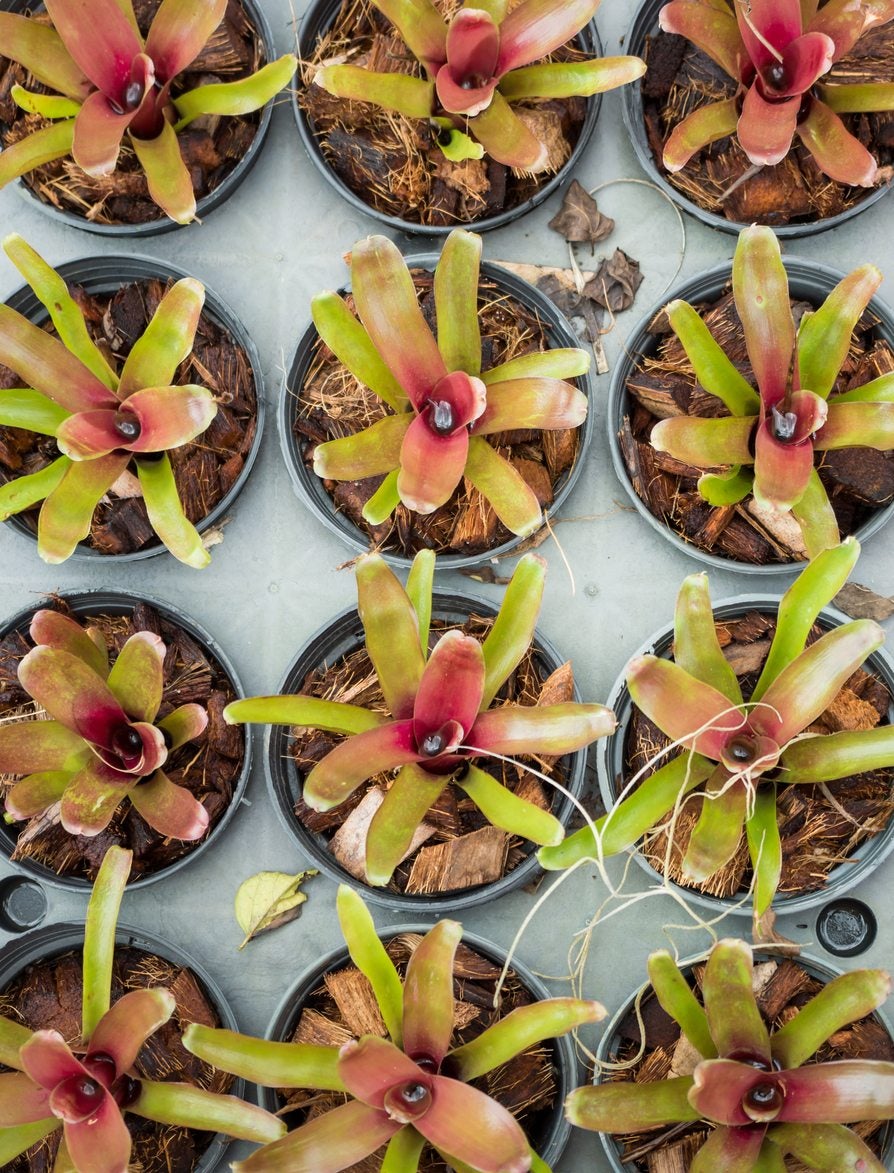Learn About Epiphyte Plant Propagation


Epiphytes are one of nature's most adaptive plants. These wonderful specimens can thrive without deep soil by harvesting much of their water and nutrient needs from the air. Some epiphytes reproduce through pups and others from seed or vegetative action. The easiest epiphyte plant propagation is through pups, but not all varieties produce these. Seed can take years to develop recognizable plants, while cuttings on epiphytic cacti seem the best choice. Propagating epiphytic plants starts with recognizing which type of plant you are growing and choosing the method best for that species.
Propagating Epiphytic Plants
There are many types of epiphytic plants. Bromeliads are one of the most common houseplants, but you may also come upon epiphytic cacti, Tillandsia, and other species. Each has a different method of reproduction. Knowing how to propagate epiphytic plants will help increase your collection and sustain any favorite specimens. Epiphyte plant propagation is not particularly difficult but there are a few rules to observe, and patience is a virtue.
Epiphytic Seed Propagation
Propagation by seed is probably the most universally recognized method for any plant. Epiphytes can be grown from seed if they can be acquired or seed can be gathered from your own plants. Use a well-draining substrate, such as half sand and half peat or even pure vermiculite. Moisten the substrate evenly and sow seeds almost at the surface of the soil and barely covered with sand. Most epiphytes hail from heavy, thick jungles and prefer low light conditions which means they seed in such lighting. Keep your container in a low-light area of the home where temperatures are at least 65 degrees F. (18 C.). A heat mat will greatly improve the chances of germination. Keep the substrate lightly moist but not soggy. The time of germination will vary upon species. You will not need to start transplanting epiphytes grown from seed for at least two years; yes, they grow that slowly.
How to Propagate Epiphytic Plants with Cuttings
Probably the best species for cuttings are cacti. Epiphytic cacti cuttings produce an exact clone of the parent plant and will flower, and fruit much more quickly than plants sown with seed. This method of epiphyte plant propagation can yield roots in just weeks and blooms within the year. Use clean, sterile cutting implements to avoid the transfer of disease. Cuttings can be taken any time of the year but tend to work best if taken in spring. If the plant is branching and has segmented stems, take the cutting at the joint. If the plant has pads, either cut at the base of the pad or you can take the upper segment of the pad. Allow cuttings to callus for a week before planting in sterile sand that has been moistened. If the cactus is a sun seeker, place the container in a bright location and if the parent was a low-light plant, site the cutting in less light. Keep the medium moderately moist and temperatures high; up to 75 degrees F. (24 C.) provides optimum germination conditions.
Propagating Pups
No, we're not talking about canines, but the offsets on many epiphytes. Bromeliads are a classic example of a plant that produces pups. Over the years, a single plant can become a crowded group of small and large plants all clustered together. These are pups and are easy to remove from the parent and plant singly. Transplanting epiphytes in this manner results in faster mature plants and is so easy even a novice gardener can accomplish the task successfully. Pups should be 1/3 as tall as the parent. You may either pull the pup away from the mother or use a sharp knife to cut it away. Ensure part of the mother's root system is attached. Allow the broken or cut end to callus for up to a week. Prepare moist, sterile soil and insert the pup just deep enough so it stands upright. Keep the container in moderate light where temperatures are warm and, in a few weeks, it will start to root. The care of pups is the same as adult plants.
Sign up for the Gardening Know How newsletter today and receive a free copy of our e-book "How to Grow Delicious Tomatoes".

Bonnie Grant is a professional landscaper with a Certification in Urban Gardening. She has been gardening and writing for 15 years. A former professional chef, she has a passion for edible landscaping.